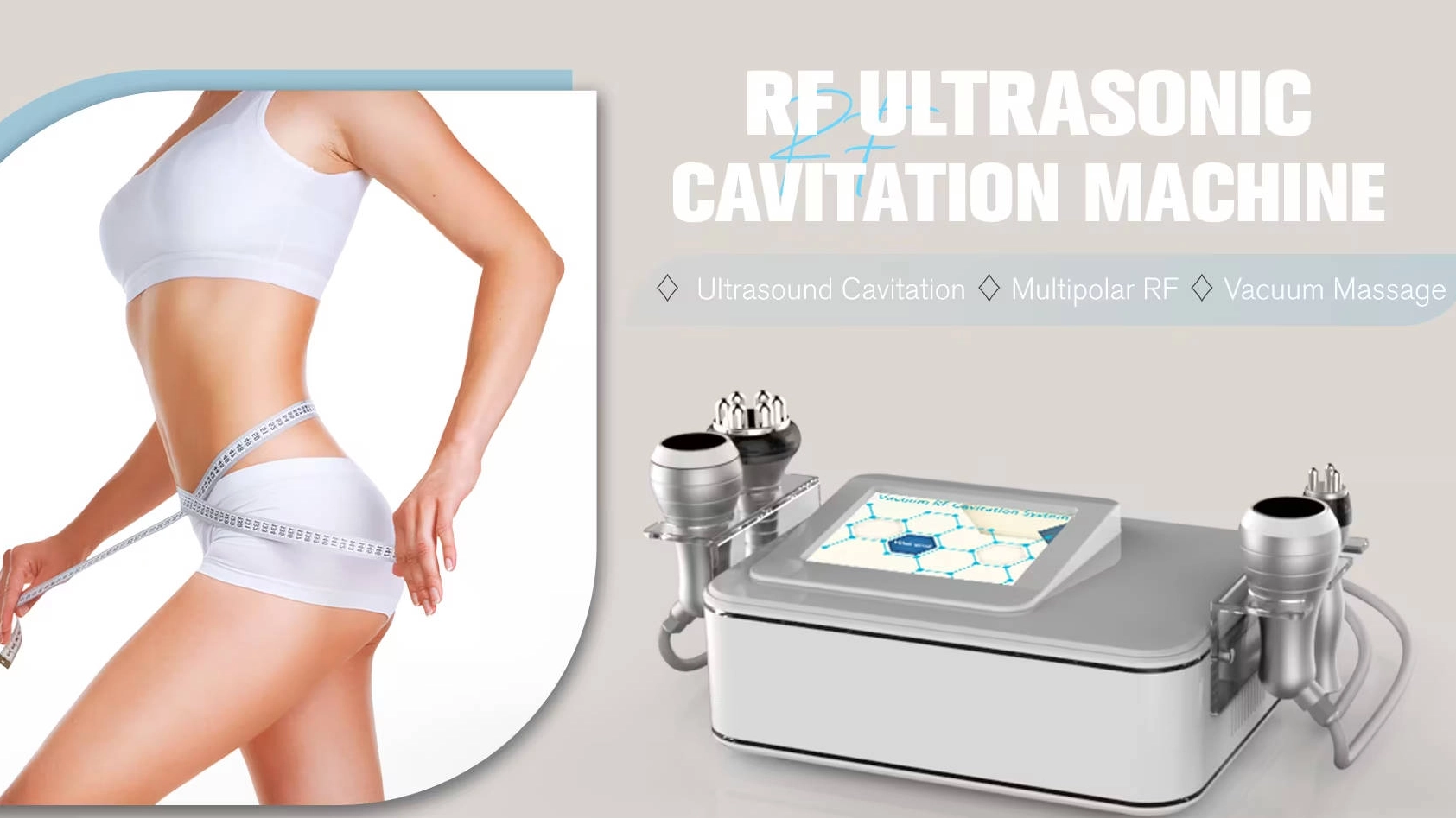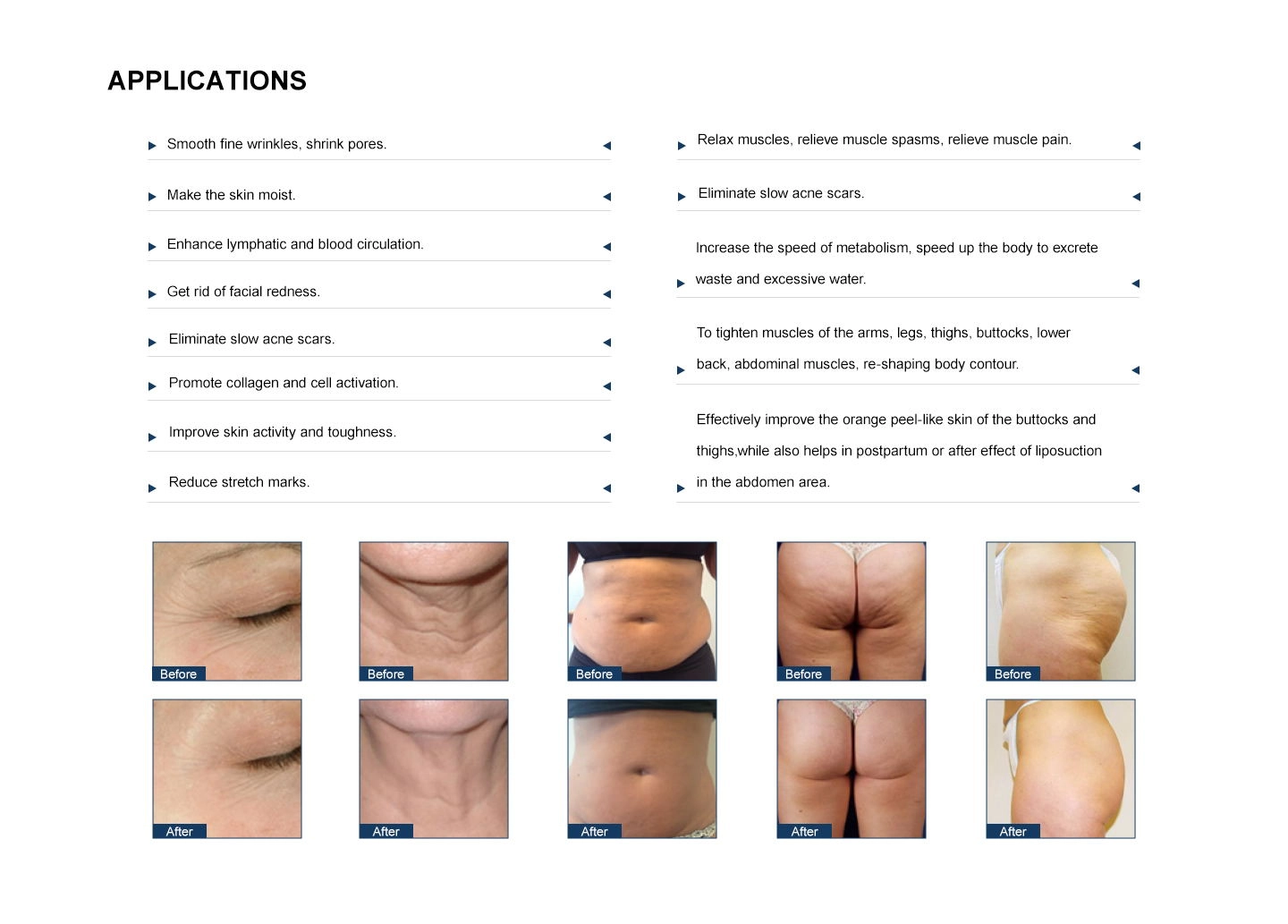Non-invasive body contouring is everywhere now. You can walk into a random spa in Bangkok, Dubai, or Los Angeles and you’ll probably see a poster about “slimming with sound waves” or “radio frequency lift.” People want results without pain or downtime—it’s that simple.

But here’s what many don’t realize: no single beauty machine can handle both fat and skin perfectly. Cavitation melts fat, yes. RF tightens skin. But use just one, and something still feels unfinished. When you mix the two, though? That’s where the magic happens—firmer, smoother, more even results.
Companies like Nubway have quietly made this combo their specialty. We have spent years refining how RF and cavitation interact, so technicians can switch between them smoothly without overheating or uneven results. It’s smart engineering, not hype.
So, let’s talk through what’s really going on inside the skin, what kind of changes clients actually see, and why more salons are switching to combination devices instead of old single-use ones.
Understanding Ultrasonic Cavitation and RF
What Is Ultrasonic Cavitation?
Cavitation sounds like something out of a physics book, but in practice, it’s surprisingly straightforward. Ultrasonic cavitation machine sends low-frequency sound waves into the fat layer. Those waves form microscopic bubbles that pop so fast they shake fat cells apart. The fat turns liquid, and your body does the cleanup—mainly through the lymphatic system.
It’s great for stubborn bits: the tummy pooch, inner thighs, the back of the arms. The process feels odd at first—like tiny buzzing under warm gel—but not painful. No cuts, no needles, no downtime. Some techs even joke that it’s so quiet you could scroll your phone mid-session.
Drink plenty of water afterward, though. It really does help flush out what’s been released.
What Is Radio Frequency (RF)?
RF is the “tightening” side of the story. It heats the deeper skin layers, waking up fibroblasts to start making fresh collagen and elastin. Think of it as coaxing your skin to repair itself from the inside.
RF doesn’t burn or peel. It’s more like gentle warmth that firms things up over time. The cool thing? You can literally feel the difference a few weeks later—skin gets springier, fine lines soften, and the surface looks more alive.
RF doesn’t compete with cavitation—it completes it. Cavitation trims; RF tones. One handles bulk, the other polish.
Why Combining RF and Ultrasonic Cavitation Works Better
Dual Action: Fat Reduction + Skin Tightening
I’ve watched clients who only did cavitation come back a bit disappointed. “It’s smaller,” they’d say, “but it’s kind of soft.” That’s where RF changes everything. It firms the skin right after the fat layer is treated, tightening collagen while new fibers form.
The result feels balanced—no hollow look, no sagging. Just smoother transitions and more natural curves. Some people even notice their clothes fitting better within two or three weeks, even though the scale barely moves.
Enhanced Circulation and Lymphatic Drainage
RF’s warmth also wakes up circulation. When blood moves better, the body clears out the liquefied fat faster. Techs can actually see the skin tone improve right on the table—rosier, more oxygenated.
Clients often say they sleep well after a combo session or feel lighter the next day. It’s not imagination; it’s the lymphatic system catching up. Some therapists recommend a light walk that evening—it helps more than people think.
Visible and Long-Lasting Contouring Results
Do both beauty treatments together, and you’ll notice a smoother outline that holds longer. Collagen keeps working behind the scenes for weeks. The beauty is gradual; you wake up one morning, look in the mirror, and realize your waist or chin line looks just tighter.
No drama, no “day one transformation” nonsense—just steady improvement. The kind that lasts.
Ideal Candidates for Combination Treatments
This isn’t a one-size-fits-all miracle. The best results show on people close to their target weight who struggle with small fat pockets or mild sagging. Think new moms, desk workers, or anyone post-weight loss.
Interestingly, some clinics use RF+cavitation on faces now—especially along the jawline or under the chin. Done gently, it’s amazing how it lifts without swelling.
From a business angle, these machines are gold. One system covers several treatments—fat reduction, skin tightening, cellulite, even facial care. It’s efficient, especially for small salons. No wonder owners call them their “money corner.”
What to Expect During a Treatment Session
Each session runs about 30–60 minutes. Usually, cavitation comes first. The therapist glides the handpiece slowly in circular motions—you’ll hear a soft hum or crackling sound, which is normal. Then comes RF. The skin warms to around 40–42 °C (104–107 °F)—just enough to trigger collagen, not enough to hurt.
Machines from Nubway are designed to keep that temperature steady. I’ve tested one—it stays within a single degree the whole time, which is impressive. That means comfort for the client and less risk for the operator.
Most people describe it as a soothing heat, like a warm towel on the skin. Afterward, they get up, check their phone, and go back to their day. That’s the charm—no downtime at all.
Post-Treatment Care and Maintenance
Hydration matters. If you skip water, the process slows down. Most pros tell clients: two liters minimum that day. Add a short walk if you can.
Usually, 6–10 sessions spaced a week apart work best. Results sneak up gradually—some see a firmer look after two visits, others after five. The improvement continues even weeks later as collagen rebuilds.
A little patience pays off more than chasing quick fixes.

The Business Advantage for Salons and Distributors
From the salon owner’s point of view, combination machines just make sense. You save space, money, and time. Two of the most popular treatments—fat reduction and tightening—in one compact device.
Clients love it. They get more done per visit and come back for maintenance. Some clinics package it as “Summer Body Sculpt” programs or include it in VIP memberships.
And for distributors, customization is a big deal. Nubway provides OEM and ODM services—your logo, your color, your specs. That kind of flexibility helps local brands stand out, especially in regions where design and branding matter as much as results.
Conclusion
Mixing RF and cavitation isn’t just a trend—it’s a smart evolution. You deal with fat and skin together, not separately. The body looks more refined, and the skin feels younger without surgery or recovery.
The non-surgical shaping market keeps growing, and clients are getting smarter—they ask about combination tech now. Clinics that adapt early usually build stronger trust and repeat bookings.
If you’re in this field, partnering with a solid manufacturer like Nubway gives you reliable machines, steady support, and tech that’s already proven in real clinics. At the end of the day, that’s what counts—results your clients can see and you can stand behind.
FAQ
Q: How many sessions does RF and Ultrasonic Cavitation machine have before you notice a change?
A: Most people spot it around the third or fourth visit. It depends on age, metabolism, and how consistent you are.
Q: Can RF and Ultrasonic Cavitation machine be used on the face too?
A: Yes, with adjusted energy levels. RF and cavitation together can tone the neck, jawline, and even around the cheeks carefully.
Q: What matters most when choosing a RF and Ultrasonic Cavitation machine?
A: Frequency range, safety certification, and energy stability. Look for 30–40 kHz cavitation and 1–5 MHz RF. Fancy screens don’t matter if the output isn’t stable.





